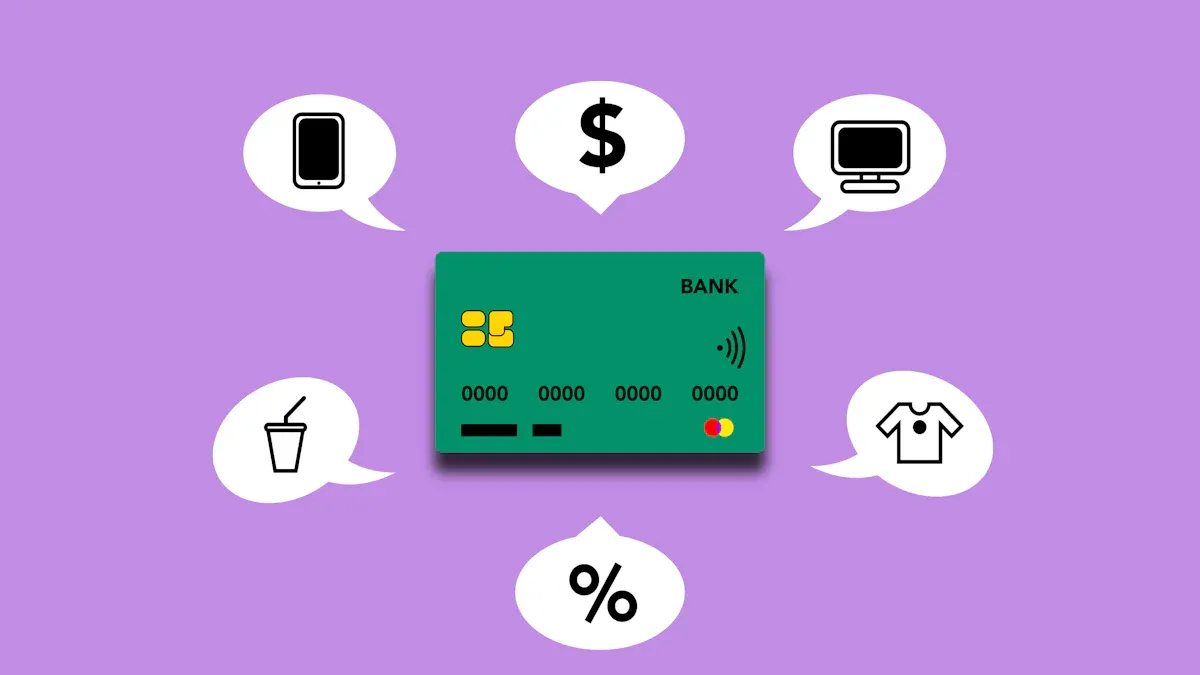- EasyCard
- Trade
- Help
- Announcement
- Academy
- SWIFT Code
- Iban Number
- Referral
- Customer Service
- Blog
- Creator
Analysis of Citibank's International Wire Transfer Fees: Remittance Costs, Influencing Factors, and Discounts

Image Source: unsplash
When analyzing Citibank’s international wire transfer fees, a common misconception is treating them as a single fixed expense. In reality, the total cost of a transfer consists of multiple dynamic components and is not set in stone.
Understanding these components is the first step to effectively managing and reducing transfer expenses. A clear understanding of the fee structure can help senders make more cost-effective decisions.
Key Points
- Citibank’s international wire transfer fees consist of handling fees, cable charges, intermediary bank fees, and exchange rate margins.
- The customer’s account level and chosen transfer channel affect wire transfer fees, with premium accounts and online processing typically being more cost-effective.
- Citibank Global Transfers between Citibank accounts incur no handling fees, though exchange rates may include bank commissions.
- Rate lock services can help customers avoid exchange rate fluctuation risks, but foreign currency wires cannot be scheduled for future dates.
- Comparing third-party transfer services can reveal more transparent fee structures, but Citibank offers unique tracking and security advantages.
Citibank International Wire Transfer Fees Explained: Four Core Costs

Image Source: pexels
A comprehensive Citibank international wire transfer fee analysis must break down its cost components. The total transfer cost primarily consists of the following four core components, and understanding them is key to controlling expenses.
Handling Fee
The handling fee is the service fee charged by the bank for processing wire transfer instructions. This fee is typically fixed but varies depending on the customer’s account level. For example, a standard account holder sending money via traditional wire transfer may need to pay a $35 handling fee. Higher-tier accounts often enjoy fee waiver benefits.
Tip: Fee differences across account levels are significant.
| Account Type | Incoming International Wire Fee | Outgoing International Wire Fee (via Citi Online or Citi Mobile) | Outgoing International Wire Fee (via Branch or Banker Assistance) |
|---|---|---|---|
| Citigold | Waived | Waived | Charged |
| Citigold Private Client | Waived | Waived | Waived |
Cable Charge
The cable charge is the communication cost incurred by the bank for sending transfer information through the SWIFT (Society for Worldwide Interbank Financial Telecommunication) network. Citibank charges lower fees for international wires initiated online compared to those processed at a branch or via phone. Choosing online channels is an effective way to reduce this cost.
Intermediary Bank Fees
Intermediary bank fees are the most unpredictable part of the total transfer cost. When funds are sent from Citibank to the recipient bank, they may pass through one or more intermediary banks for clearing. These intermediary banks are independent financial institutions. They charge their own service fees, typically deducted directly from the transfer principal. As a result, the recipient may receive less than the original amount sent.
Exchange Rate Margin
The exchange rate margin is a hidden cost. There is a difference between the transaction exchange rate (bank rate) offered by the bank and the mid-market rate, which is the bank’s profit source. When analyzing Citibank international wire transfer fees, this factor must be considered. Customers can proactively check and compare exchange rates to assess this cost.
- Customers can find official foreign exchange rates on Citibank’s “FX Rates” page.
- This page includes “Counter Foreign Exchange Rate Table” and “Real-Time Foreign Exchange Rate” information.
- The query address is:
https://www.citibank.pl/en/fx-rates/citigold.html
By comparing the bank’s rate with the real-time mid-market rate, senders can clearly understand the actual cost of exchange rate margins.
Key Variables Affecting Total Transfer Costs
A deeper analysis of Citibank international wire transfer fees reveals that the total cost is not fixed. It is influenced by several key variables. Understanding these variables allows senders to take proactive steps to optimize expenses.
Customer Account Level
The customer’s account level is the primary factor determining fees. Higher-tier accounts typically enjoy significant fee waivers.
- Citigold and Citigold Private Client account holders can benefit from multiple fee waivers.
- These waivers typically include: all incoming wire transfers free, as well as outgoing wire transfers initiated via Citi Online or Citi Mobile App free.
- Note that even for higher-tier accounts, outgoing wire transfers processed through a branch or with banker assistance may still incur fees.
To maintain Citigold account eligibility, customers typically need to maintain a high combined average monthly balance, such as between $180,000 and $999,999.99. If this requirement is not met for several consecutive months, fee waiver eligibility may be revoked.
Transfer Processing Channel
Choosing different processing channels results in significant fee differences. Online channels are generally more cost-effective than offline channels. Wire transfers processed at a branch counter or with banker assistance via phone typically incur higher handling and cable fees. For example, an offline international wire transfer fee can reach up to $45, while online transactions have lower costs. Therefore, prioritizing online banking or mobile banking is a direct way to reduce explicit costs.
Transfer Amount and Currency
The transfer amount and chosen currency also affect the total cost. On one hand, banks may offer more competitive exchange rates for larger transfers, reducing the hidden cost of exchange rate margins. On the other hand, while Citibank does not explicitly list which currencies incur higher fees, all foreign currency exchange rates include a commission for currency conversion services. Wealth management-level customers may receive more favorable rates when performing currency conversions.
Destination Country and Receiving Bank
The final destination of the transfer directly impacts intermediary bank fees. Funds traveling from Citibank to the recipient bank may pass through one or more intermediary banks, each charging independent fees.
| Transfer Route Example | Common Intermediary Banks | Approximate Fees (USD) |
|---|---|---|
| US to India | JPMorgan Chase, Citibank New York | 15 – 40 |
| UAE to India | Standard Chartered, HSBC Dubai, Citibank | 20 – 40 |
As shown in the table above, Citibank itself may act as an intermediary bank in certain transfer routes. However, banks typically do not provide a fixed “recommended intermediary bank list” to help customers avoid fees. The best way to obtain relevant information is to directly consult bank customer service to understand the intermediary banks potentially involved in a specific transfer route.
How to Effectively Save on Citibank Wire Transfer Fees

Image Source: unsplash
After understanding the components of Citibank’s international wire transfer fees, senders can proactively adopt multiple strategies to reduce total costs. Effective cost control involves not only choosing the right service but also leveraging the advantages of the account itself. The following five strategies provide senders with a clear path to savings.
Strategy 1: Leverage Premium Account Fee Waivers
Upgrading your account level is one of the most direct strategies for reducing international wire transfer fees. Citibank offers differentiated fee structures for different account levels, with premium account holders typically enjoying significant fee waivers. For users with frequent transfer needs, maintaining a premium account’s eligibility can result in long-term savings that far outweigh account maintenance costs.
The table below clearly illustrates the fee differences for international transfers across different account levels for online and offline channels.
| Transfer Type | Standard Account | Citi Priority | Citigold | Citigold Private Client |
|---|---|---|---|---|
| Outgoing International – Online (Foreign Currency) | Free | Free | Free | Free |
| Outgoing International – Online (USD) | $35 | $25 | Free | Free |
| Outgoing International – Branch/Banker Assistance | $45 | $45 | $45 | Free |
Strategy 2: Choose Online Channels
Choosing the right processing channel is critical for cost control. Online channels (Citi Online or Citi Mobile App) have significantly lower fees than offline channels. Many Citibank accounts incur no handling fees for foreign currency wire transfers initiated online. In contrast, completing the same transaction through a branch counter or with banker assistance can cost up to $45.
Key Tip: Regardless of account level, prioritizing online banking or the mobile banking app for international wire transfers is the simplest and most effective way to reduce handling and cable fees.
Strategy 3: Utilize Citibank Global Transfers
For customers needing to transfer funds between Citibank accounts globally, Citibank Global Transfers is a highly cost-effective option. The biggest advantage of this service is that it incurs no transfer handling fees and enables instant or near-instant fund delivery.
However, senders should note that while this service waives handling fees, the exchange rate may include the bank’s conversion commission. Additionally, this service has daily and weekly transfer limits, which are directly tied to the customer’s account level.
As shown in the table above, higher account levels have larger available transfer limits. For high-net-worth clients with large transfer needs, this service offers significant convenience.
Strategy 4: Book Rate Lock Services
Exchange rate fluctuations are a significant hidden cost in international wire transfers. Citibank offers a rate lock feature, allowing customers to secure a fixed exchange rate before authorizing the transaction, thus avoiding risks from market fluctuations.
When using this service, note the following:
- Customers can view and lock real-time exchange rates before confirming the transfer.
- The locked rate typically has a four-minute validity period.
- If the operation is not completed within the validity period, the rate expires, and customers need to obtain a new quote.
- Since the exchange rate must be locked at the time of authorization, foreign currency wire transfers cannot be scheduled for future dates or set as recurring transfers.
Risk Warning: If a foreign currency wire transfer is recalled or returned for any reason, the funds will be converted back at the bank’s current buyback rate. Due to exchange rate fluctuations, the final returned amount may be less than the original principal sent.
Strategy 5: Compare with Other Transfer Services
When analyzing Citibank international wire transfer fees, comparing them with professional third-party transfer services (such as Wise or Remitly) is a wise move. These fintech companies typically use a different fee model than traditional banks.
- Fintech Model: They mostly use the mid-market exchange rate and charge a transparent, fixed service fee on top. The advantage of this model is a clear fee structure with no hidden exchange rate margins.
- Bank Model: Traditional banks typically add a margin to the market exchange rate as profit, in addition to charging handling and cable fees.
The table below compares the features of two mainstream fintech services:
| Feature | Wise | Remitly |
|---|---|---|
| Fee Structure | Transparent, typically a fixed fee plus a percentage of the transfer amount. | Usually a fixed fee, with fee structures varying by country and payment method. |
| Exchange Rate | Uses the mid-market rate with no markup. | Offers competitive rates but may include a small markup. |
| Speed | Most transfers completed in seconds to a day. | Most transfers completed in minutes to a day. |
| Transparency | Very high, with all fees and rates clearly displayed before the transaction. | High, with fees and rates shown before the transaction. |
| Receiving Methods | Bank accounts, Wise accounts. | Bank accounts, cash pickup, mobile wallets. |
While fintech services have an advantage in cost transparency, Citibank, as a global bank, offers unique value. For example, Citibank uses SWIFT gpi technology, allowing customers to track transfers like tracking a package. Additionally, through partnerships with institutions like Mastercard, Citibank has expanded its global payment network, providing broader and more secure payment solutions for both businesses and individual clients. The final choice of service depends on the sender’s comprehensive consideration of cost, speed, security, and convenience.
Citibank’s international wire transfer costs are not prohibitively high but are entirely manageable. Senders mastering the right strategies is key to reducing expenses. Effective approaches include:
- Leveraging the fee waiver benefits of premium accounts.
- Prioritizing lower-cost online channels for processing.
- Utilizing value-added services like Citibank Global Transfers and rate locking.
Final Tip: Before initiating any transfer, customers should confirm the latest fee schedules, promotional offers, and real-time exchange rates through Citibank’s official app or website to make the most cost-effective decision.
FAQ
How can I save the most on Citibank transfers?
Customers can minimize costs by leveraging premium accounts and processing through online channels. For example, Citigold Private Client customers sending USD via online channels can avoid handling fees. For all accounts, foreign currency wire transfers processed online are typically free.
Why does the recipient receive less than the amount I sent?
This is usually due to intermediary bank fees being deducted from the transfer principal, reducing the final amount received. This is the most unpredictable cost component in international wire transfers.
What are the advantages of Citibank Global Transfers?
This service incurs no handling fees for transfers between global Citibank accounts, and funds typically arrive instantly. However, customers should note that the exchange rate may include a bank conversion commission. The service also has daily transfer limits.
Can I schedule a foreign currency wire transfer for a future date?
No. Foreign currency wire transfers cannot be scheduled for future dates or set as recurring transfers. This is because the exchange rate must be locked in real-time at the time of transaction authorization to mitigate market fluctuation risks. Once locked, the operation must be completed immediately.
*This article is provided for general information purposes and does not constitute legal, tax or other professional advice from BiyaPay or its subsidiaries and its affiliates, and it is not intended as a substitute for obtaining advice from a financial advisor or any other professional.
We make no representations, warranties or warranties, express or implied, as to the accuracy, completeness or timeliness of the contents of this publication.




Contact Us
Company and Team
BiyaPay Products
Customer Services
is a broker-dealer registered with the U.S. Securities and Exchange Commission (SEC) (No.: 802-127417), member of the Financial Industry Regulatory Authority (FINRA) (CRD: 325027), member of the Securities Investor Protection Corporation (SIPC), and regulated by FINRA and SEC.
registered with the US Financial Crimes Enforcement Network (FinCEN), as a Money Services Business (MSB), registration number: 31000218637349, and regulated by FinCEN.
registered as Financial Service Provider (FSP number: FSP1007221) in New Zealand, and is a member of the Financial Dispute Resolution Scheme, a New Zealand independent dispute resolution service provider.




















